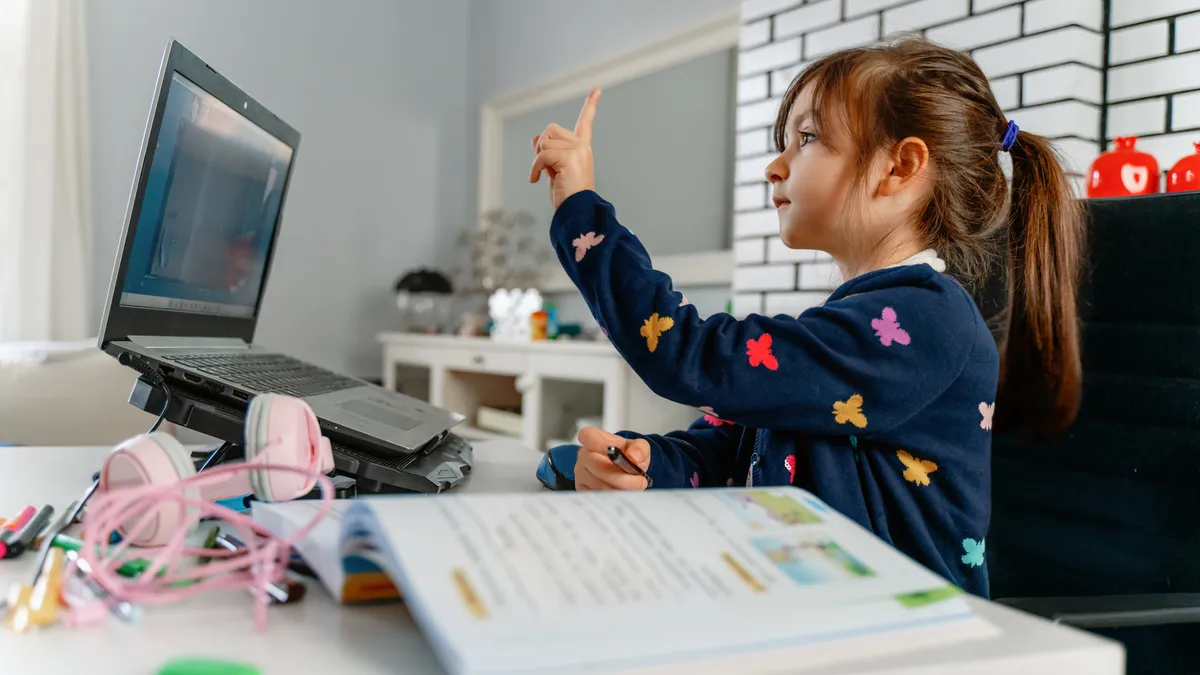Dive Brief:
- In a hopeful sign for early literacy gains, K-2 students who received individual virtual tutoring during the 2022-23 school year showed higher reading test scores than their peers by the end of the year, according to a study released Wednesday by a tutoring research program at Stanford University.
- The study, which analyzed 2,085 students across 12 Texas charter schools, found students using 1:1 or 2:1 virtual tutoring services performed 1.57 percentile points higher.
- While the study found positive signs that the online tutoring model boosted reading comprehension for younger students, researchers acknowledged the outcomes from virtual tutoring are “more modest” than from similar in-person tutoring programs.
Dive Insight:
Researchers conducting the study relied on test scores from the Dynamic Indicators of Basic Early Literacy Skills, which measures literacy skills aligned with many Common Core State Standards.
OnYourMark Education, the tutoring provider they analyzed, began offering virtual tutoring services for early literacy in 2021 based on the “science of reading.” The program provides 1:1 or 2:1 tutoring sessions four times a week during the school day, with each student having a "consistent tutor assignment." The 20-minute sessions center on phonics, phonological awareness and fluency.
Research on the individualized online tutoring shows strong potential for addressing challenges some school districts face when trying to implement high-quality in-person tutoring on a large scale, according to the researchers from Stanford's National Student Support Accelerator program.
State and federal efforts to put more tutors in school buildings have ramped up post-COVID as a way to boost academic recovery, but they've come with scalability challenges.
Some states have reported struggles with large-scale tutoring as they work to provide services that are high-quality, consistent and flexible. And even though federal pandemic relief funds have helped states expand tutoring initiatives, labor shortages have been the most pressing obstacle to scaling up.
While there are indications of more in-person services, including tutoring, it remains a pain point for schools.
The White House announced in September that it is nearly 75% of the way toward the Biden administration’s goal of placing an additional 250,000 tutors, coaches and mentors in public schools by summer 2025.
The National Partnership for Student Success, a public-private partnership spearheading the tutoring initiative, reported that 53% of public schools provided high-intensity tutoring in 2022-23. However, 25% report they had no tutors, mentors or success coaches in their buildings in 2022-23.













